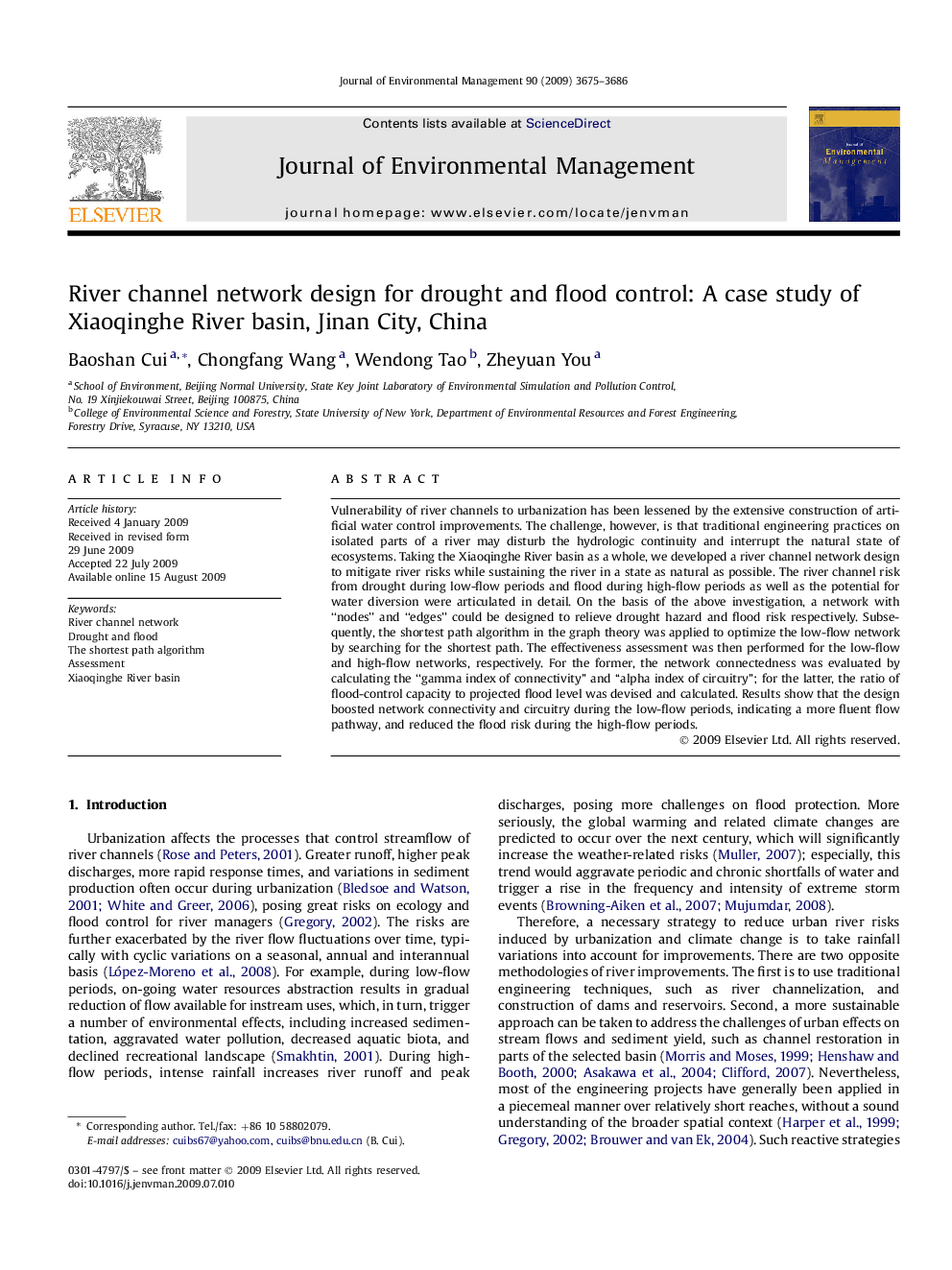| Article ID | Journal | Published Year | Pages | File Type |
|---|---|---|---|---|
| 1058064 | Journal of Environmental Management | 2009 | 12 Pages |
Vulnerability of river channels to urbanization has been lessened by the extensive construction of artificial water control improvements. The challenge, however, is that traditional engineering practices on isolated parts of a river may disturb the hydrologic continuity and interrupt the natural state of ecosystems. Taking the Xiaoqinghe River basin as a whole, we developed a river channel network design to mitigate river risks while sustaining the river in a state as natural as possible. The river channel risk from drought during low-flow periods and flood during high-flow periods as well as the potential for water diversion were articulated in detail. On the basis of the above investigation, a network with “nodes” and “edges” could be designed to relieve drought hazard and flood risk respectively. Subsequently, the shortest path algorithm in the graph theory was applied to optimize the low-flow network by searching for the shortest path. The effectiveness assessment was then performed for the low-flow and high-flow networks, respectively. For the former, the network connectedness was evaluated by calculating the “gamma index of connectivity” and “alpha index of circuitry”; for the latter, the ratio of flood-control capacity to projected flood level was devised and calculated. Results show that the design boosted network connectivity and circuitry during the low-flow periods, indicating a more fluent flow pathway, and reduced the flood risk during the high-flow periods.
